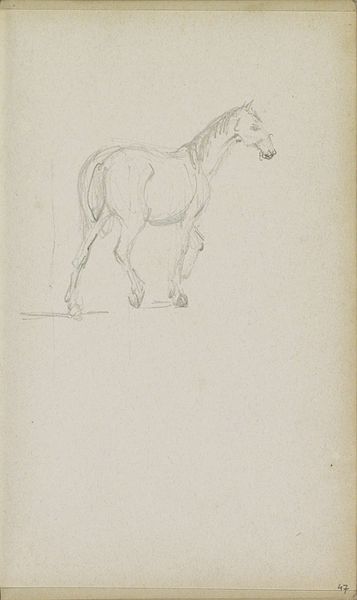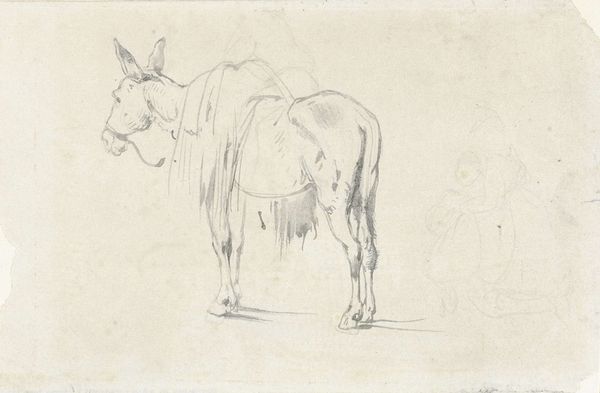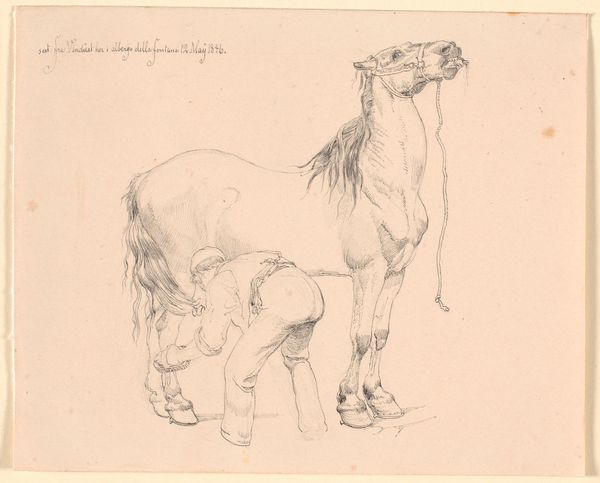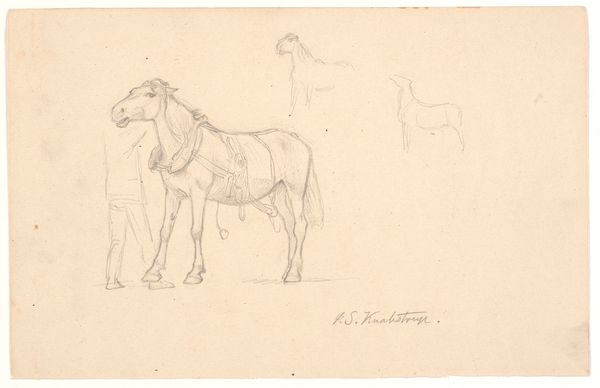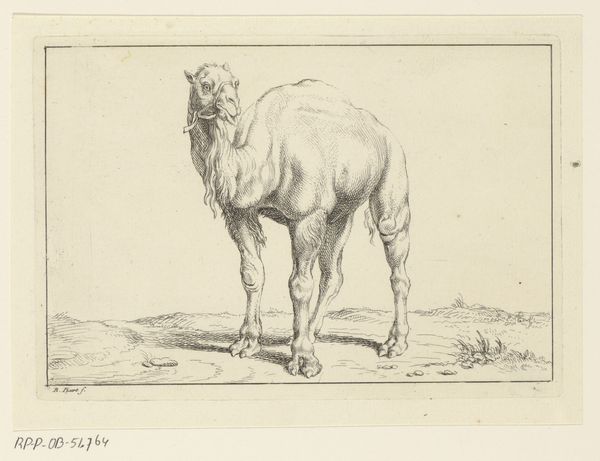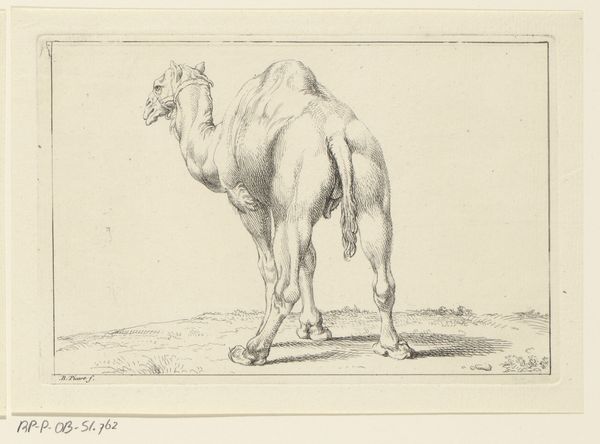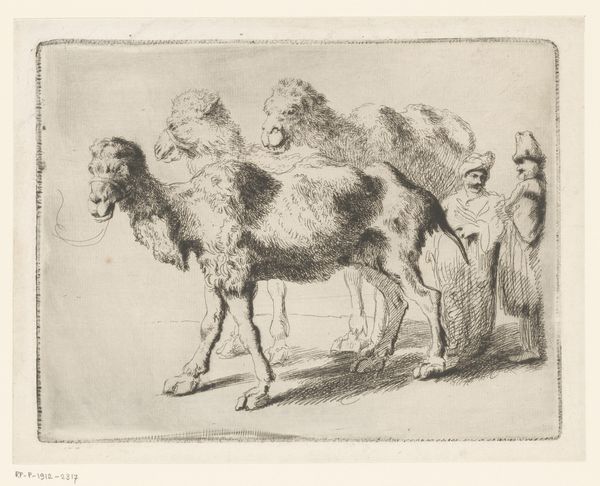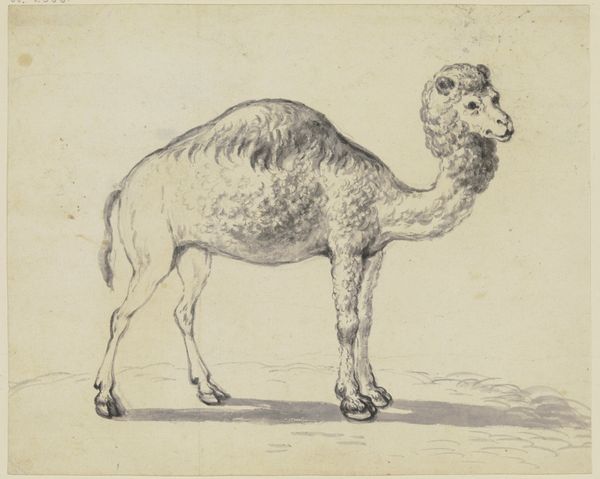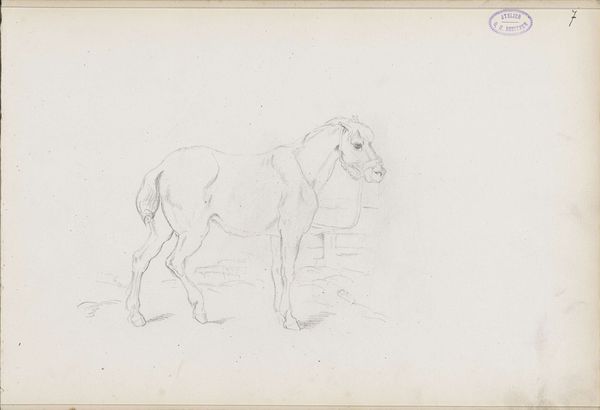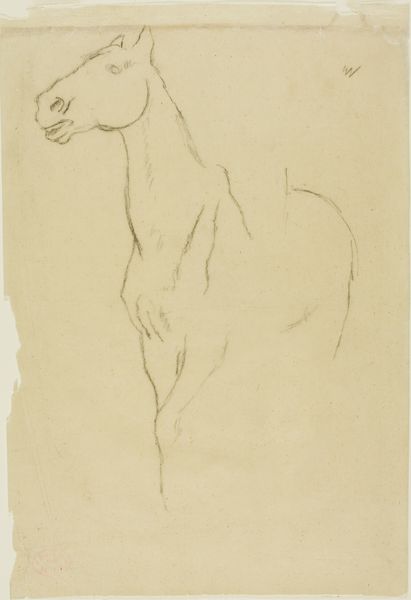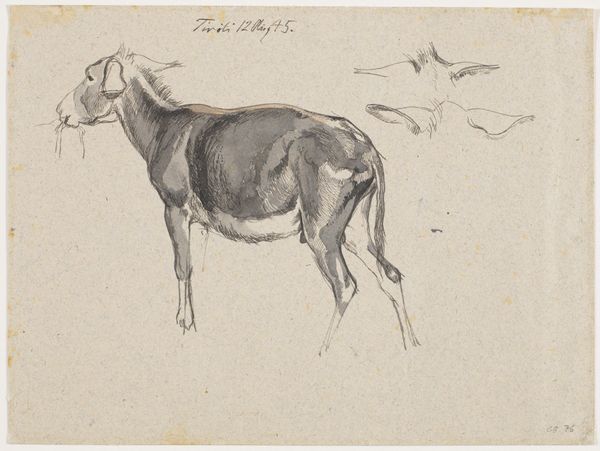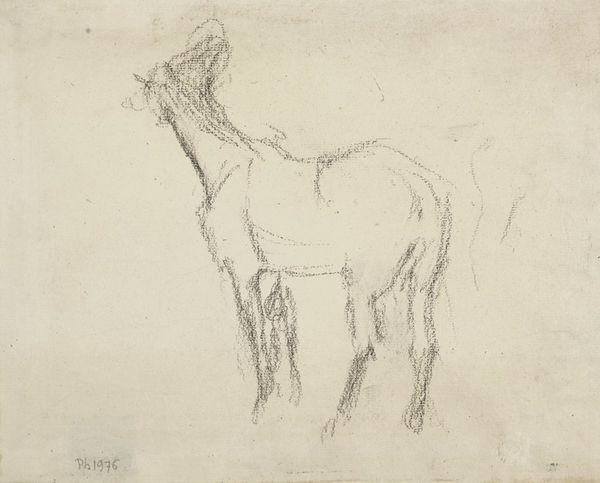
drawing, pencil, graphite
#
pencil drawn
#
drawing
#
animal
#
landscape
#
pencil drawing
#
pencil
#
graphite
#
realism
Copyright: Public Domain
Curator: This drawing captures a dromedary camel, viewed from the right, a work attributed to Gustav Heinrich Naeke. The artwork is referred to as 'One-humped camel to the right'. Editor: My initial impression is of a carefully observed study. The pencil work is delicate, creating a subtle sense of volume and texture, despite the limited tonal range. Curator: Indeed. Consider how camels are consistently utilized for logistical support throughout human history. Camels represent nomadic lifestyles across specific parts of Africa and Asia; this makes Naeke's piece reflective of power, cultural dynamism, and resource accessibility within certain intersectional environments. Editor: Yes, and I am drawn to the precision of the lines. The artist clearly had a strong understanding of animal anatomy. See the careful hatching used to model the form, particularly around the hump and legs. It demonstrates his attention to the structural elements that define the camel's physical presence. Curator: These are significant contributions because they inform discussions regarding historical trade routes. Furthermore, they spark discourse about resource management, and cross-cultural exchange dynamics across time and different population subsets. How does such representation influence public policy, for example? Editor: I find myself compelled by the subtle semiotics in the overall composition, it offers an exercise in perception that relies not upon direct statements of context or grand, narrative gestures, but on close observation. The texture feels palpable to me. Curator: Considering all interpretations, and especially because Naeke seemingly leaves this visual relatively context-free, our piece permits viewers an important and interpretative exploration related to global commerce. Such considerations enhance any awareness of labor- and economy-based inequity. Editor: Yes, by reducing the piece down to this solitary observation, the artist has unlocked more meaning than if it were surrounded by narrative or grand presentation. It highlights Naeke's approach in his capacity to show rather than tell, thus expanding possibilities.
Comments
No comments
Be the first to comment and join the conversation on the ultimate creative platform.
